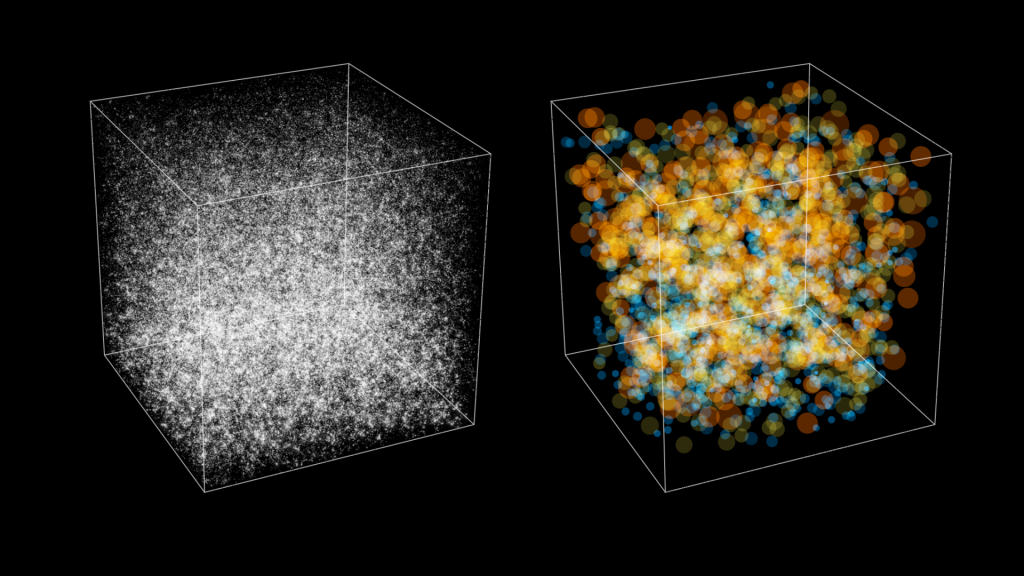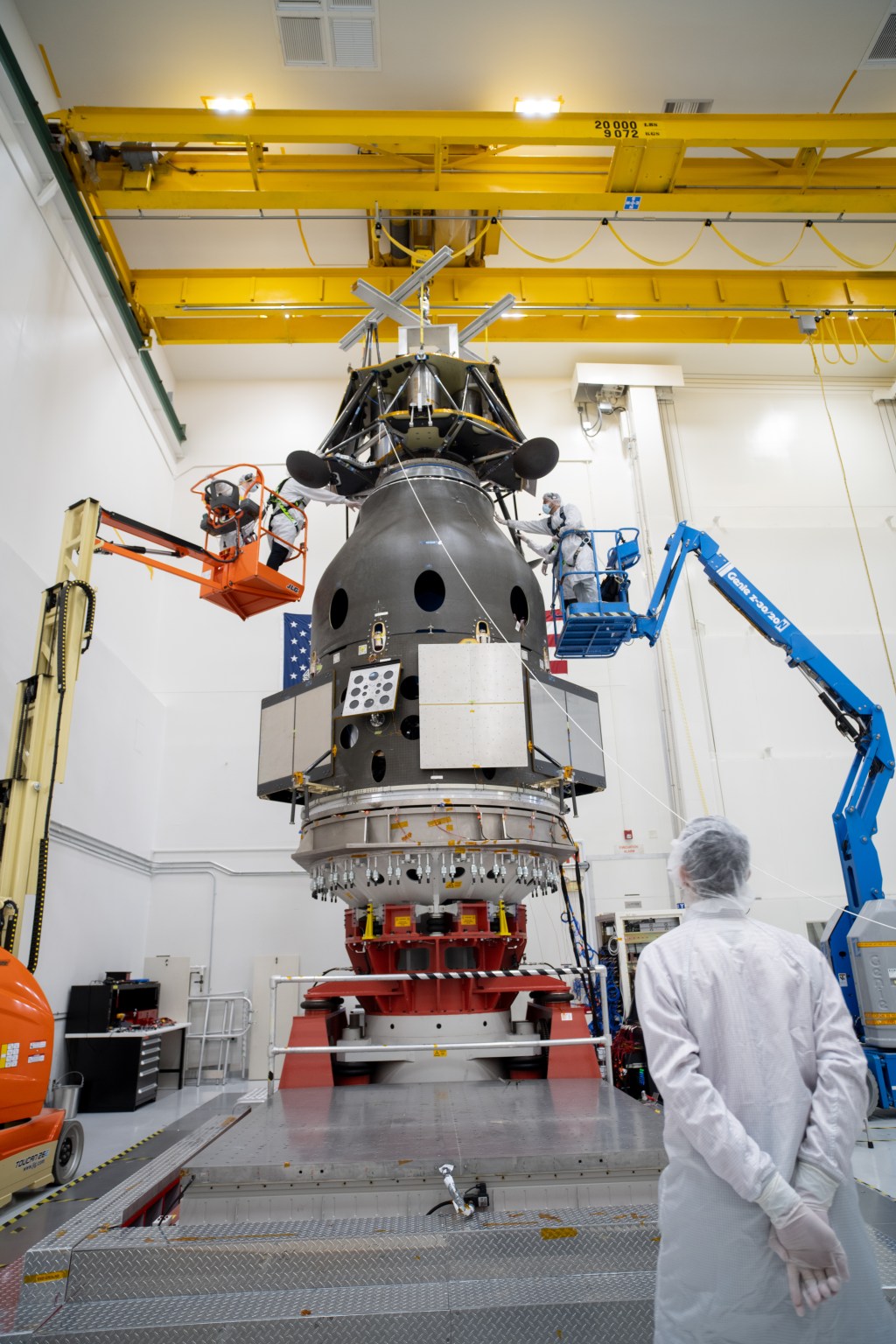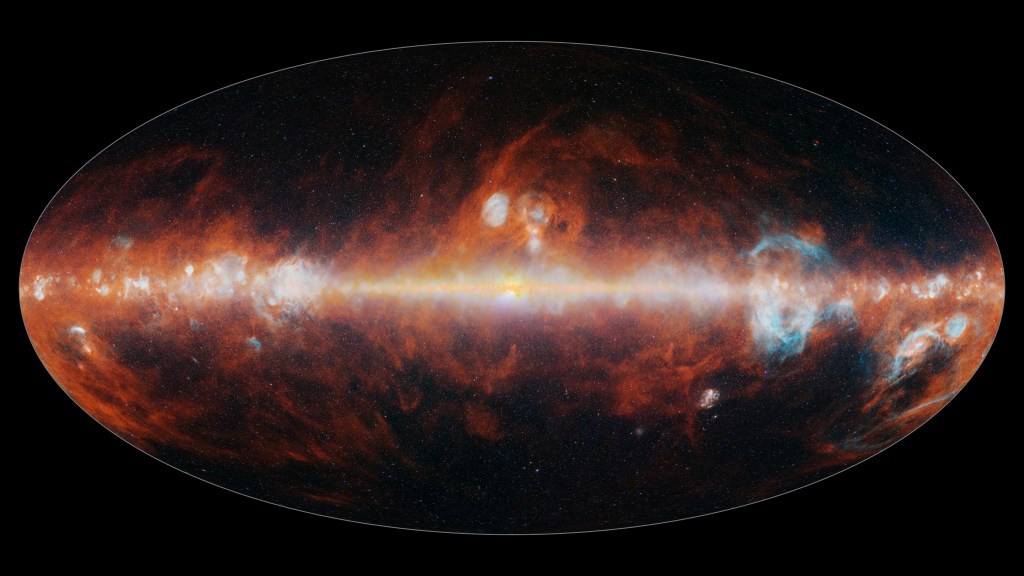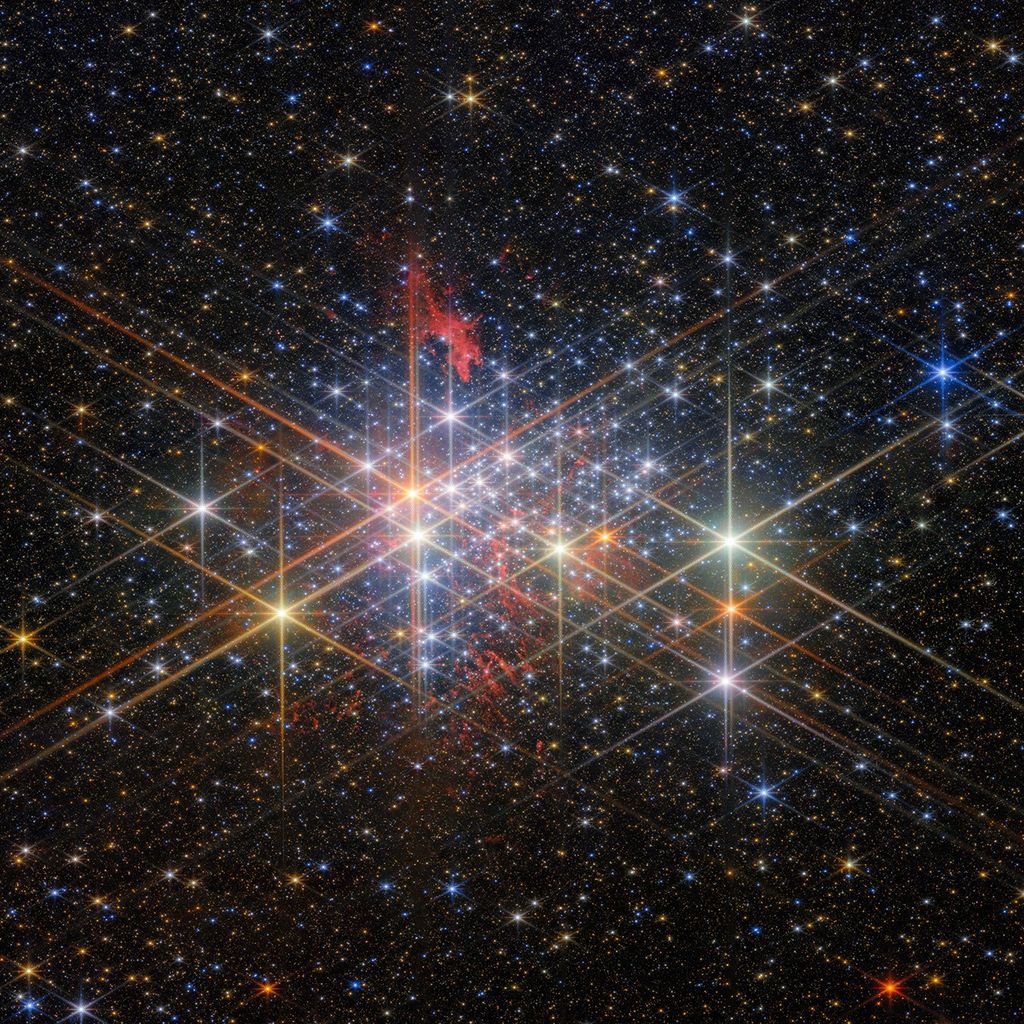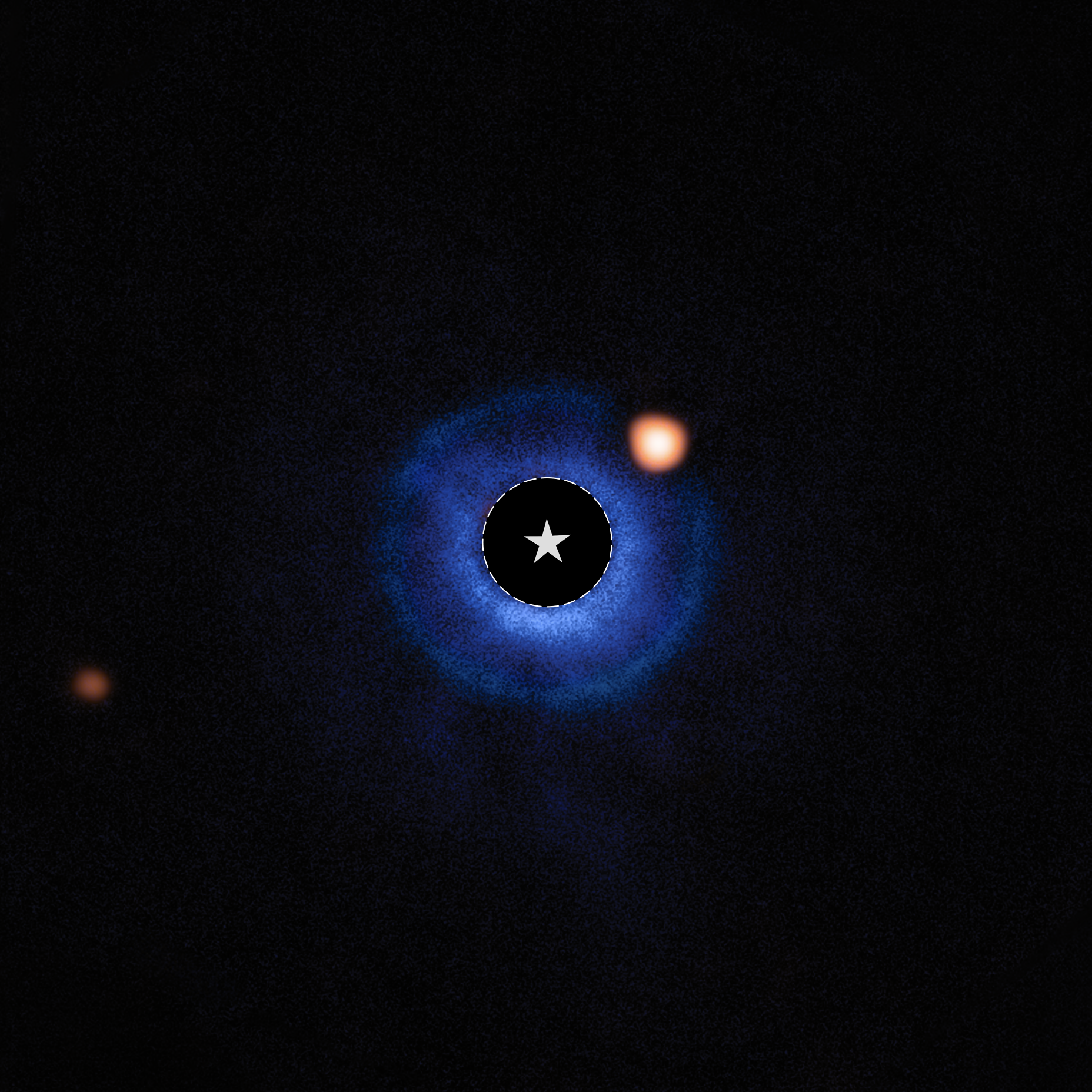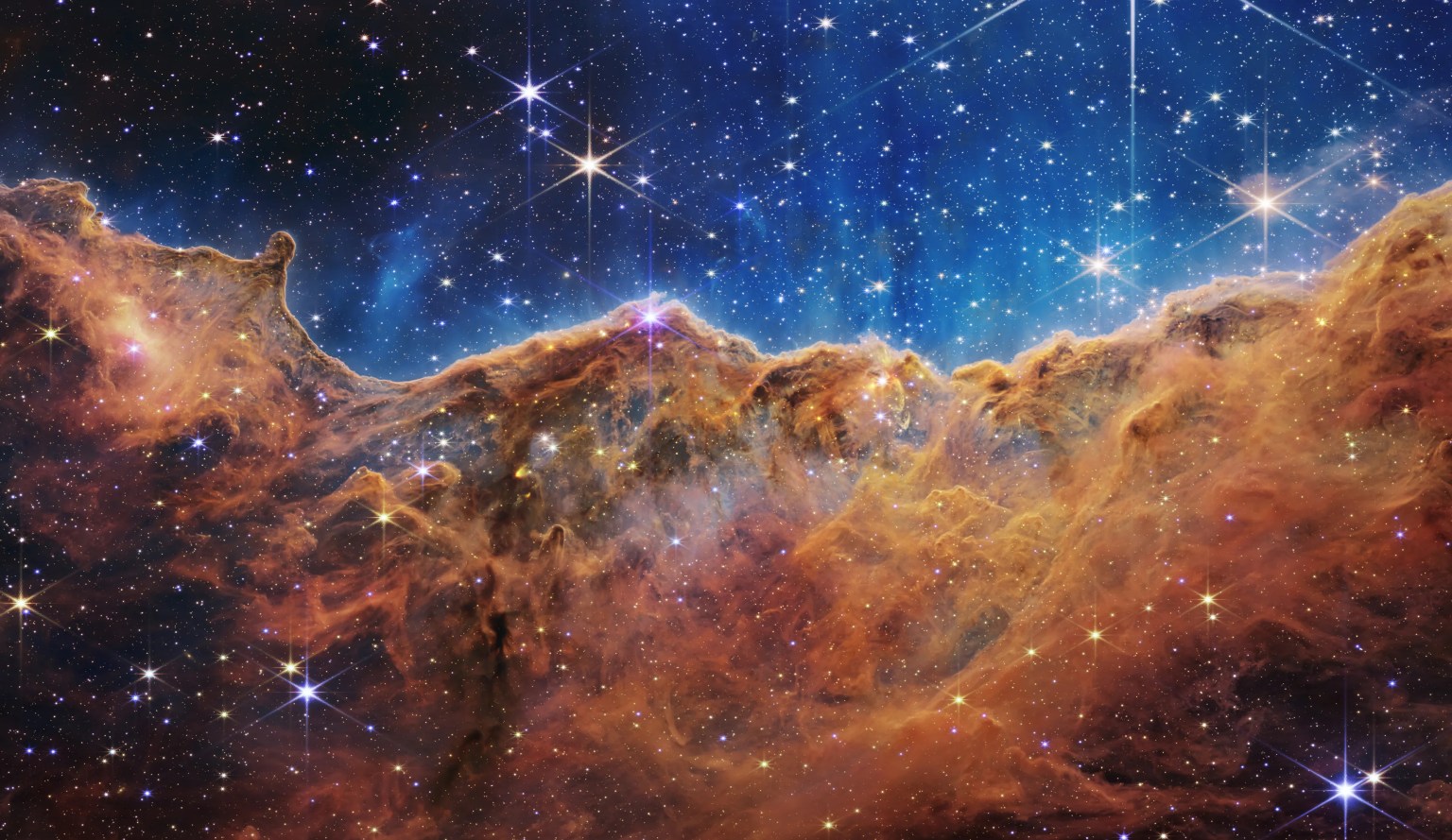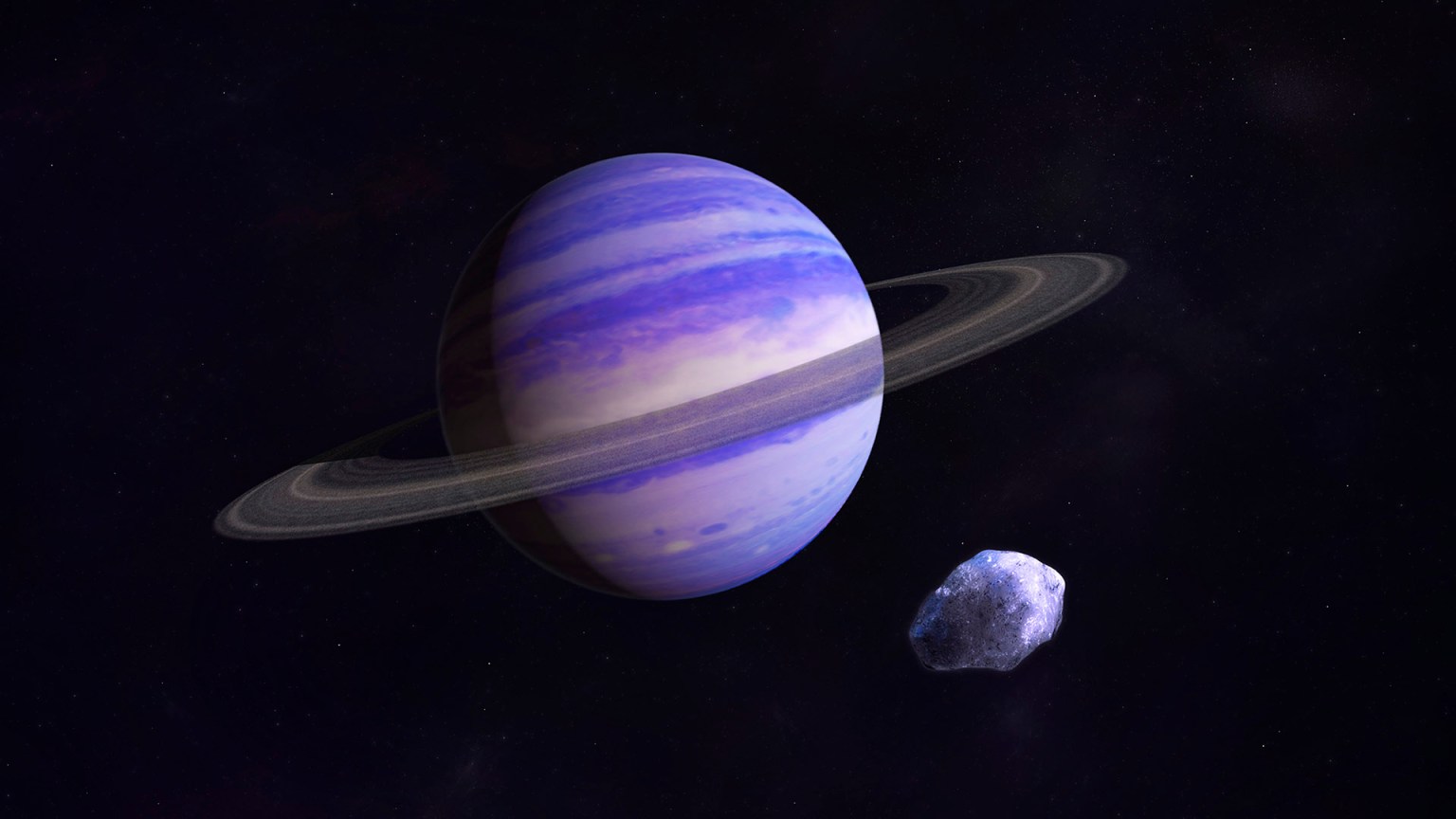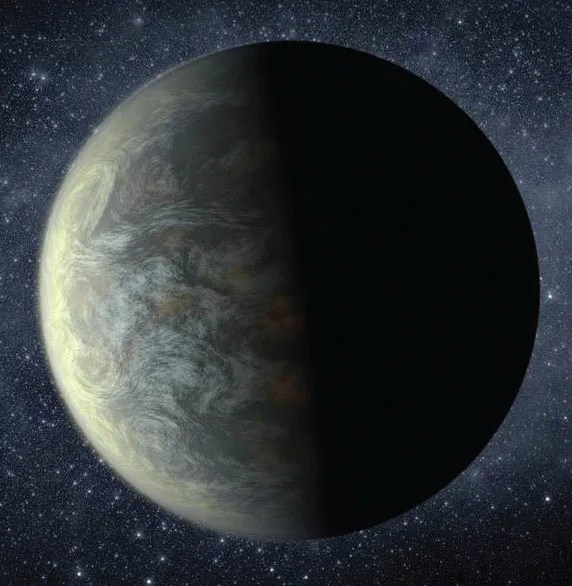Astronomers using NASA’s James Webb Space Telescope have captured compelling evidence of a planet with a mass similar to Saturn orbiting the young nearby star TWA 7. If confirmed, this would represent Webb’s first direct image discovery of a planet, and the lightest planet ever seen with this technique outside the solar system.
The international team detected a faint infrared source in the disk of debris surrounding TWA 7 using Webb’s MIRI (Mid-Infrared Instrument). The distance between the source and TWA 7 is estimated to be about 50 times the distance of Earth from the Sun. This matches the expected position of a planet that would explain key features seen in the debris disk. The results published Wednesday, June 25 in the journal Nature.
Image: TWA 7 (MIRI + VLT Image)
Using MIRI’s coronagraph, the researchers carefully suppressed the bright glare of the host star to reveal faint nearby objects. This technique, called high-contrast imaging, enables astronomers to directly detect planets that would otherwise be lost in the overwhelming light from their host star. After subtracting residual starlight using advanced image processing, a faint infrared source was revealed near TWA 7. The team ruled out an object in our solar system that happened to be in the same part of the sky as the source. While there is a very small chance that it is a background galaxy, the evidence strongly points to the source being a previously undiscovered planet.
The source is located in a gap in one of three dust rings that were discovered around TWA 7 by previous ground-based observations. The object’s brightness, color, distance from the star, and position within the ring are consistent with theoretical predictions for a young, cold, Saturn-mass planet that is expected to be sculpting the surrounding debris disk.
"Our observations reveal a strong candidate for a planet shaping the structure of the TWA 7 debris disk, and its position is exactly where we expected to find a planet of this mass," said Anne-Marie Lagrange, CNRS researcher at the Observatoire de Paris-PSL and Université Grenoble Alpes in France, lead author of the paper.
“This observatory enables us to capture images of planets with masses similar to those in the solar system, which represents an exciting step forward in our understanding of planetary systems, including our own,” added co-author Mathilde Malin of Johns Hopkins University and the Space Telescope Science Institute in Baltimore.
Initial analysis suggests that the object — referred to as TWA 7 b — could be a young, cold planet with a mass around 0.3 times that of Jupiter (about 100 Earth masses, or one Saturn mass) and a temperature near 120 degrees Fahrenheit (47 degrees Celsius). Its location aligns with a gap in the disk, hinting at a dynamic interaction between the planet and its surroundings.
Debris disks filled with dust and rocky material are found around both young and older stars, although they are more easily detected around younger stars as they are brighter. They often feature visible rings or gaps, thought to be created by planets that have formed around the star, but such a planet has yet to be directly detected within a debris disk. If verified, this discovery would mark the first time a planet has been directly associated with sculpting a debris disk, and could offer the first observational hint of a “trojan disk” — a collection of dust trapped in the planet’s orbit.
TWA 7, also known as CE Antilae, is a young (about 6.4 million years old) red dwarf star located about 111 light-years away in the TW Hydrae association. Its nearly face-on disk made it an ideal target for Webb’s high-sensitivity mid-infrared observations.
The findings highlight Webb’s ability to explore previously unseen, low-mass planets around nearby stars. Ongoing and future observations will aim to better constrain the properties of the candidate, verify its planetary status, and deepen our understanding of planet formation and disk evolution in young systems.
These observations were taken as part of the Webb observing program 3662.
The James Webb Space Telescope is the world’s premier space science observatory. Webb is solving mysteries in our solar system, looking beyond to distant worlds around other stars, and probing the mysterious structures and origins of our universe and our place in it. Webb is an international program led by NASA with its partners, ESA (European Space Agency) and CSA (Canadian Space Agency).
Related Information
Video: Eclipse/Coronagraph Animation
Webb Blog: How Webb’s Coronagraphs Reveal Exoplanets in the Infrared
Article: Webb's Impact on Exoplanet Research



